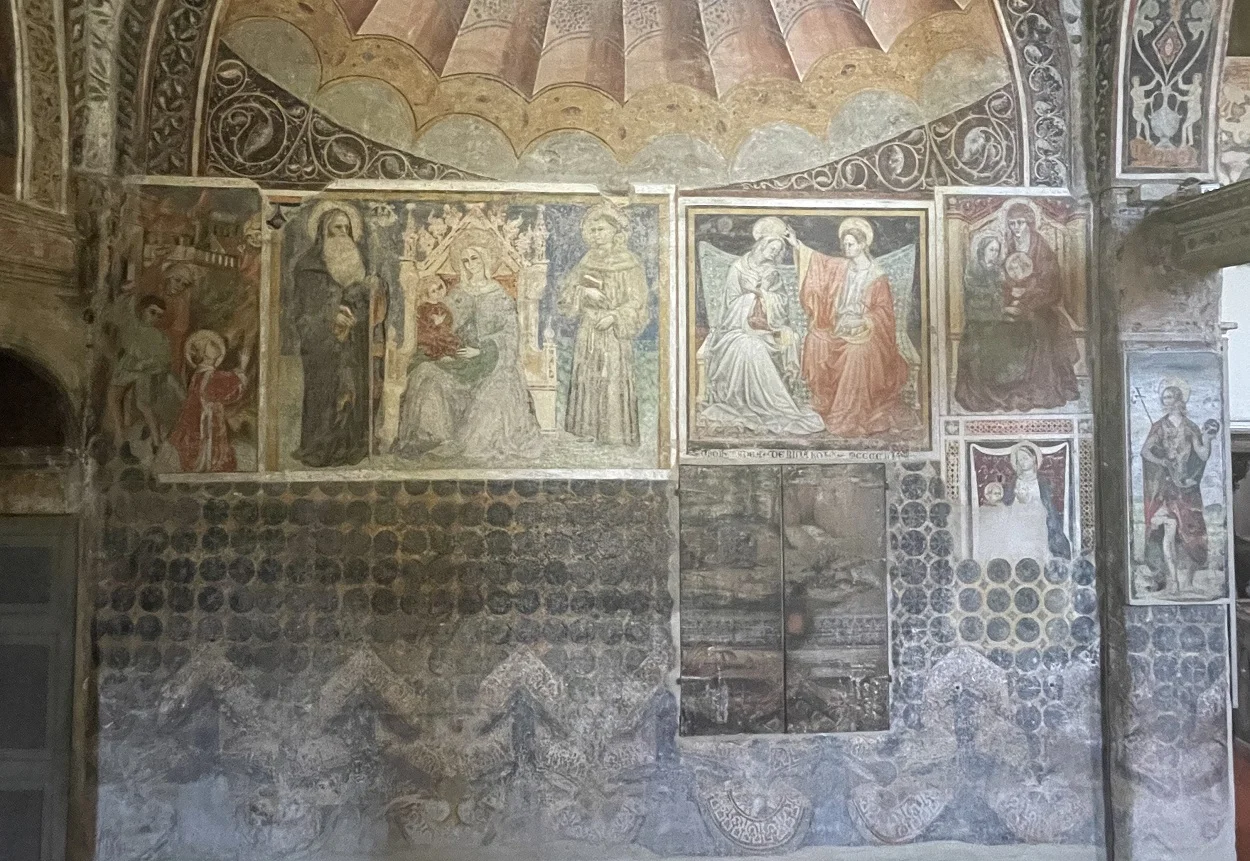A 13th-century fresco in Ferrara, Italy, provides a rare example of medieval churches using Islamic tents to veil high altars.
The fresco was identified by Cambridge historian Dr Federica Gigante at the Monastery of Sant’Antonio in Polesine, a Catholic monastic complex of the Order of Saint Benedict nuns.
The fresco, painted between the late 13th and early 14th centuries, portrays a richly decorated canopy with blue and gold drapery, topped by a bejewelled conical tent. While Islamic textiles in medieval European churches are well-documented, images of Islamic tents are extremely rare.
Dr. Gigante’s research suggests that the fresco likely depicts a real, now-lost tent, adapted as a tetravela (altar curtain), used to conceal the altar during religious rituals. It is possible that the tent was a diplomatic gift from a Muslim ruler or a war trophy, that Pope Innocent IV likely gave to the monastery during the mid-13th century.

According to Dr. Gigante, the apse walls, embedded with nails and brackets, may have once supported a hanging textile. The fresco’s intricate details with golden eight-pointed stars, pseudo-Arabic inscriptions, and a striking resemblance to Andalusi tent designs, further suggest it was modelled after an actual Islamic tent.
In the 13th century, Islamic tents were prized diplomatic gifts and sought-after spoils of war. Some were sent to European rulers, including a captured Almohad tent gifted to Pope Innocent III in 1212.
“Islamic textiles were associated with the Holy Land from where pilgrims and crusaders brought back the most precious such Islamic textiles,” Gigante said. “They thought there existed artistic continuity from the time of Christ so their use in a Christian context was more than justified. Christians in medieval Europe admired Islamic art without fully realising it.”
Header Image Credit : Federica Gigante
Sources : University of Cambridge





